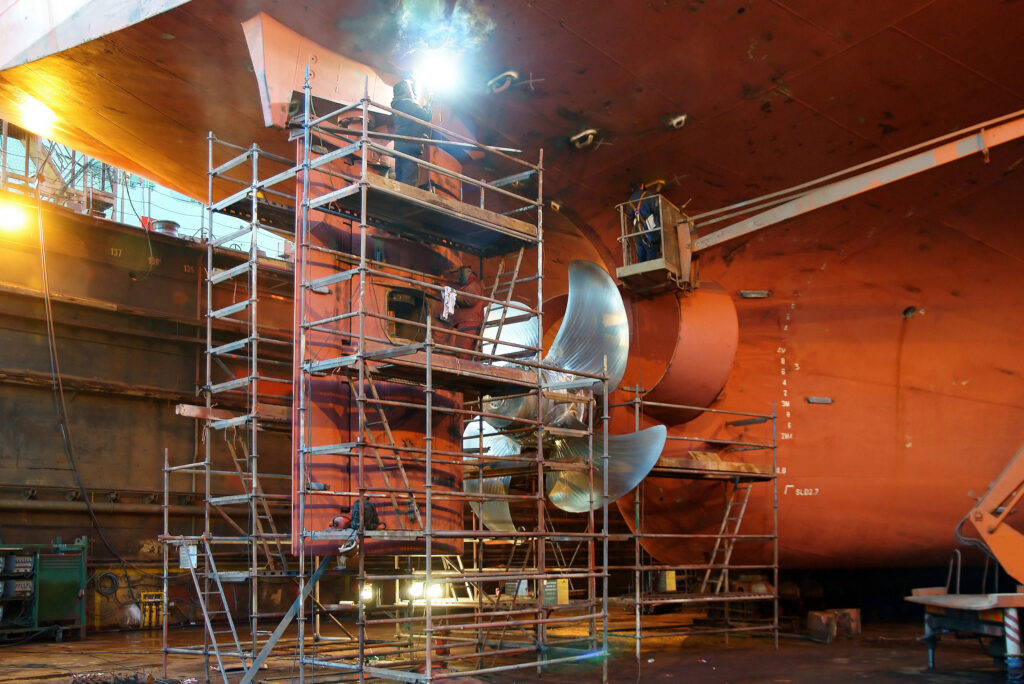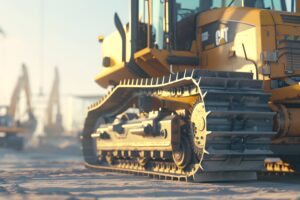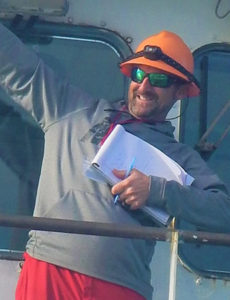- November 30, 2023
- Industry, Marine News
- THE FUEL RACE REVISITED…and other subjects
“Never let the future disturb you. You will meet it, if you have to, with the same weapons of reason which today arm you against the present.”
―Marcus Aurelius, Meditations
“The past is always tense, the future perfect.”
―Zadie Smith
The fuels of the future will be impacting everything that we do. They are already impacting commerce, from moving to more electric and natural gas-powered vehicles in cities, to the billions of dollars being diverted to research, development, production, and distribution of these alternative fuels.
When it comes to shipping, choosing among the fuel options is not easy. Each fuel has a different energy content. That means one unit of fuel A may move a certain ship one mile while it may take three units of fuel D to do the same. The fuels are either liquid and gas or change states between the two for transportation and use. Depending on the characteristics of the fuels as they change states, storage tanks will have to be able to hold higher pressures and/or tolerate lower temperatures and be constructed from special expensive materials. Ships that require bigger or heavier tanks are left with less room or weight allowance for cargo. LNG/LPG have about 40% lower volumetric energy density than diesel. But when accounting for the storge/handling factors they have 1/3 the volumetric density. Methanol, ammonia, and hydrogen have around 40% of the volumetric density of diesel plus their varying problems with distribution and handling. While these power vs space decisions can be made through calculations, at this stage, the true cost or availability of the differing fuels is still uncertain.

The use of LNG has taken the lead as it is familiar and readily available. But it is not as clean as what is needed to reach the desired goal of zero emissions, mainly due to methane slip. While LNG has lower CO2 emissions than diesel, it has higher NOX emissions. In the pursuit of zero emissions, other alternate fuels have been produced which appear to be cleaner but are expensive and not available on any commercial level. LNG is anticipated to be the leader for the next decade because of the already well-established shore infrastructure and the continued building of LNG bunkering ships.
If LNG is at the forefront, methanol, ammonia, and hydrogen are the runners up. Methanol appears to be the next choice. While expensive and not readily available, it is considered easy to store and can be transported at normal temperature and pressure, making distribution facilities easier to build.
Even though ammonia has been transported and used for decades, ammonia lags because of storage and safety issues. A huge ammonia production facility is being built on the lower Mississippi River at Donaldsonville, LA. A group called Clean Hydrogen Works will be building it at a reported cost of 7.5 billion dollars. The facility will be the largest ammonia production in the U.S. and will include two large ship docks. While some of the product will be for nitrogen fertilizers, the main purpose of the facility will be to produce blue ammonia as an alternate fuel. Clean Hydrogen Works is the lead shareholder followed by Mitsui O.S.K Lines (MOL). MOL is the largest Japanese shipping company with a reported fleet of over 800 vessels and is a major transporter of ammonia. MOL is also building new ships to be ammonia powered.
The cleanest of all fuels is hydrogen which produces zero GHG emissions. Hydrogen can be classified as gray, blue, or green depending on the process used to create it. Gray and blue hydrogen are both created through a chemical process which produces CO2. In the case of blue hydrogen, the CO2 is captured. Green hydrogen has no harmful emissions but must be manufactured via the use of electricity from a renewable energy source such as wind or solar. Hydrogen still has many downsides besides current high costs. According to Carlos Peixto, Executive Director of H2helium in Brazil, in a recent ASA webinar on hydrogen, hydrogen hates to travel, hates conversion, and dislikes storage. Translated, it is great to be used at its source but is difficult to change between gas and liquid, which is needed for transportation, and can be corrosive to all but special steels and welds. It also has a very low flashpoint, lower than natural gas. Its most practical use is through fuel cells but fuel cells large enough for ship use are many years in the future.
According to Clarksons, 93% of the active fleet that uses alternative fuels are using LNG as is 57.5% of contracted new construction. Methanol is used for 6.3% of the alternative use fleet and 20.5% of current contracts which is expected to grow through 2023 and beyond, mainly due to big players like Maersk which is building its future fleet to be methanol powered. There are over 200 ships ordered to run on methanol or to be refitted to run on methanol. The new buzzword is fuel optionality.
According to statistics from various sources, including Clarksons and DNV, the present status, to include dual-fuel and conversions, is as follows:
LNG has about 400 ships in service and nearly 600 planned, keeping in mind the world merchant fleet consists of about 60,000 vessels. There are 52 LNG bunker vessels in operation and about 80 planned. There are around 111 shoreside LNG infrastructure bases with 40 planned.
Methanol has about 25 operating ships, 200 on order, 15 bunkering vessels ordered, and 118 sites that produce/handle methanol.
Because of the historical use of ammonia, particularly in agriculture and producing plastics and other chemicals, there is a large shoreside infrastructure of 217 installations and over 200 vessels in use. There are no recorded plans for ammonia bunker vessels Ammonia tankers in the trade can use their cargo boil off as auxiliary fuel.
There are no hydrogen bunker vessels in existence or on order.
While there are many vessels worldwide, the majority of current or planned bunkering facilities are concentrated in the UK/EU/Baltic, the Far East including the major site Singapore, and the U.S./Caribbean. As expected, these sites are planned near major ports on major trade routes.
In past blogs I have mentioned that the infrastructure building costs will be high. Green methanol, ammonia, or hydrogen are expected to cost 3.0 to 3.5 times more per tonne including shipping costs, and 2 to 3 trillion dollars in infrastructure. It should also be remembered that the energy content of these fuels is not equal, so it can take more of some fuels to produce the same power output as others.
The classification society DNV estimates that the maritime sector will use 30-40% of the projected world capacity of methanol in 2030.
The U.S. has put up $7 billion to be allocated among seven domestic regions to help develop renewable hydrogen hubs. This fund is to attract co-funding from individual participants up to as much as $40 billion. The Gulf Coast facility planned for Bayport, Texas with help of the government’s $1.2 billion, already has ExxonMobil and Chevron as participants with the development of e-methanol for vessel fuel among their interests.
Along those lines, Carbon Sink, a planned producer of green methanol via carbon capture, has a joint venture with Maersk to provide methanol fuel to their ships in US ports. This will be accomplished through Rose Cay Maritime. Rose Cay may be known as the purchaser of part of the Bouchard fleet of petroleum ATBs. The first Carbon Sink plant in North Dakota is anticipated to be in service in 2027.
The carbon capture CO2 process is not without problems. I’ve learned that CO2 can run from clean (pure) to many stages of dirty. Methanol production requires clean CO2. Dirty CO2 may not play well with containment tanks or loading/unloading systems as the impurities may corrode the storage or delivery systems. Additionally, escaping dirty CO2 is dangerous, as it can be explosive.
On board, this cleanliness of CO2 can start with the type and efficiency of the scrubber and onboard storage system. In the transportation phase how can one design the containment system on a Liquified CO2 carrier (LCO2) when one doesn’t know how clean the CO2 is that is being received?
One can certainly anticipate that this e-methanol will be expensive.
I know this blog is about the marine industry, but my opening sentence also leads here…The aviation industry also has an environmental compliance problem. For years, the domestic industry has been working on Sustainable Aviation Fuel (SAF), particularly from bio-mass sources. The U.S. government is subsidizing research into the production and distribution of SAF which is expected to cost 2-4 times more than current fuels. The U.S. target is to produce 3 billion bbls of SAF by 2030. There has been experimentation with hydrogen fuel cells and electricity to power small aircraft but as noted, abundant H2 as a fuel is still far off. Many of the alternative fuel choices explained above will have to be made in every industry that has been using fossil fuels. These decisions in the marine industry are magnified by the cost of new construction and the comparatively long lives of marine assets.
INLAND
The USDA announced that there will be a record corn crop for 2023 with record export commitments, while soybean production and commitments are down.
For imports, steel is down due to higher production by domestic steel producers. The large producer, Nucor, located in Convent, Louisiana, produces most of this increase. However, its importation of ores only travels as far as the facility which does not help movement of barges north to provide transportation for the agricultural exports.
While fertilizer imports were up in the last quarter to meet the needs for 2024 planting season, north bound cement is down considerably as compared to 2022. This is due to the reduction in new construction due to high interest rates.
On the transport side, Arcosa Marine inland shipbuilders announced record revenue for the first three quarters of 2023. Their 4th quarter income has dropped off, and 2024 is still expected to have reduced demand; fortunately, their current backlog extends into 3rd quarter 2024.
OFFSHORE
The offshore sector is happy. Finally. Clarkson’s measure of day rates and utilization has their offshore index the highest since the start of 2009 – even higher than the crazy year 2014. Offshore includes OSVs and rigs, but also subsea construction vessels and other MPVs. After significant rig scrapping between 2015-2020, current rig utilization averages 92% with some high specification units at or beyond 95%. While day rates are up to profitable levels, they still have not matched previous record levels. However, rig owners are signing contracts for periods of 10-15 years at these rates, possibly to keep their aging equipment gainfully employed for a longer period.
Clarkson’s OSV index is above the 2015 peak but still 15% lower than in 2008. This is an aging fleet. As of April, the average build year was 2009. Twenty-five percent of OSVs are over 20 years old and 54% were built between 2007-2014. Historically, as a build cycle ends the order book goes to about 30% of the fleet. It is currently at 2%. This may partially explain why service vessel values are rising. In the past, major oil companies have had vessel age limits in their charter parties. This may make the newest vessels the most attractive to charter with possibly high day rates.
While OSVs are in demand, the AHTS market is still weak. This may be due to the offshore market’s higher need to service rigs/platforms over rig moves and anchor handling.
CONSTRUCTION
IMO and ECU regulations to reduce GHG have changed both the economics of worldwide shipping as well as the economics behind ship construction. In the industry, ships are built with an estimated Normal Economic Life (NEL) of 20-25 years. Ships are built “cheaply” with that in mind. Everyone knows a U.S. flagged Jones Act ship is substantially more costly to build, but no one points out that these ships have an estimated NEL of 40-45 years. Jones Act tankers in particular incorporate safety redundancies that are not found on many foreign built ships.
Part of modern international thought is to build designs with future retrofitting and/or midlife reconstruction and life extension in mind. Use of longer-lived systems and materials can lead to higher construction costs

Aside from adding dual-fuel engines, there are many ship design ideas to help ease to the use of alternative fuels. One major idea is to move the accommodation/wheelhouse block forward to provide more distance between personnel and dangerous fuels like ammonia. There is also the thought of fully automated engines rooms or building extra strength into decks to support future heavy tanks holding liquefied fuels. Electrical systems will continue to grow through diesel electric systems where one or more alternative fueled engines can power many systems throughout a ship via integrated energy management systems and battery banks.
Lloyd’s Register (LR) has reported that there are between 9,000-12,900 large merchant vessels that are candidates for engine retrofitting between now and 2030. This is the point where they and other experts believe that all new vessel construction will be “green”. However, within that total number are vessels whose value or remaining economic life will not justify retrofit costs that may range from $5-15 million dollars depending on the size of the ship and the fuel choices. This cost is not just for the new engine but also for the new onboard fuel storage and safety systems. As for the practicality, LR says that even with a planned 60-day conversion period, the number of yards capable of doing this type of work may be as few as 15, some of which may not be interested in such complicated projects. This leaves many ships looking for alternate ways to improve their CCII ratings or be forced to the scrap yard, should charterers and underwriters abandon low rated ships.
All these costs will bring difficult financing decisions. With longer-lived ships and their cost, it may be necessary for shippers to move to 10-year or longer charters. The charter can then be used as leverage in construction financing. There are already changes being discussed in standard charter parties regarding fuel costs and consumption and necessary speeds and routing for a vessel to maintain an acceptable CII.
Financing is of course vital. Limited shipyard new construction slot availability puts new slots out 3.6 years, per Clarkson’s Research. Then there is worldwide inflation. Clarkson’s advises that current newbuild costs (adjusted) are only 8% lower than the record high pricing just prior to the 2008 financial crash. Prices are up 36% since the end of 2020. These prices, with the current earnings of some of the sectors like dry cargo and even containerships, bring up the question of whether the vessel can be operated long enough to make a reasonable profit.
Earning capacity is an interesting factor for vessel owners (I believe around 40% of them) that buy low and sell high, flipping ships like stock market day traders. These owners must read the industry tea leaves even more than financers. To their advantage, they are often in a family with several generations of maritime experience to help them predict the market. In this regard, the Hamburg Ship Evaluation Standard (Long Term Asset Value-LTAV) is a blessing to owners.
Of assistance in covering the costs of new construction are the lenders of the Poseidon Principle. These are lenders who pledge to have a percentage of their marine portfolio in low emission ships. There are now growing alliances of charterers that are grouping to encourage cleaner transportation of their products. The Zero Emission Maritime Buyers Alliance (ZEMBA) have asked container carriers to submit bids to move 600,000 containers over three years on ships that offer a 90% reduction in GHG emissions over standard fuels. There are 20 members in this alliance, including major corporations like Amazon, IKEA, Walmart, Lowes, and Home Depot. While I think this is a bit of a PR thing for the shippers and for the container lines, it may allow the carriers to submit higher rates for the movement of these containers. This will be of importance with the current low rates presently in the containership industry versus the high costs of all the new containerships currently being built.
A separate force towards greening is the growing number of marine underwriters that will be offering better premium rates to better rated vessels.
THE FUTURE
Do you want to build an Ice classed ship not knowing if there will be ice in 10 years? Do you want to build a VLCC not knowing if there is a need for oil in 10 years? This question is a bit easier. Yes, there will still be a need for oil in 10 and even 15 years. It will be a waning need but will not totally disappear. Fossil fuels, be it diesel or even coal, will not be obsolete for a good while.
The world is pushing for solar panels and vast windfarms to take the load. When the sun isn’t shining (half the time is night) and the wind doesn’t blow (or blows too strongly for wind generators) power isn’t being produced. There should be more talk about power storage systems than about flaming lithium-ion. In a future blog, we will look at the swift moving battery R & D.
The future will be alternative fuels, but there will be a fight among the many worldwide users for the fuels. Some of the green fuels will go directly to power machinery but others are needed as feedstock to produce greener fuels. Fossil fuels, be it diesel or even coal, will not be obsolete for a good while. The first diesel ship was built in 1911, and that last commercial sailing ship stopped in the mid-1950s. The future dual-fuel diesels with new lube oils and highly sophisticated controls systems live on and we’re seeing the return of sailing ships on the horizon.
-Norman Laskay
If you’d like to keep this conversation going, please email me at nlaskay@DLSmarine.com











